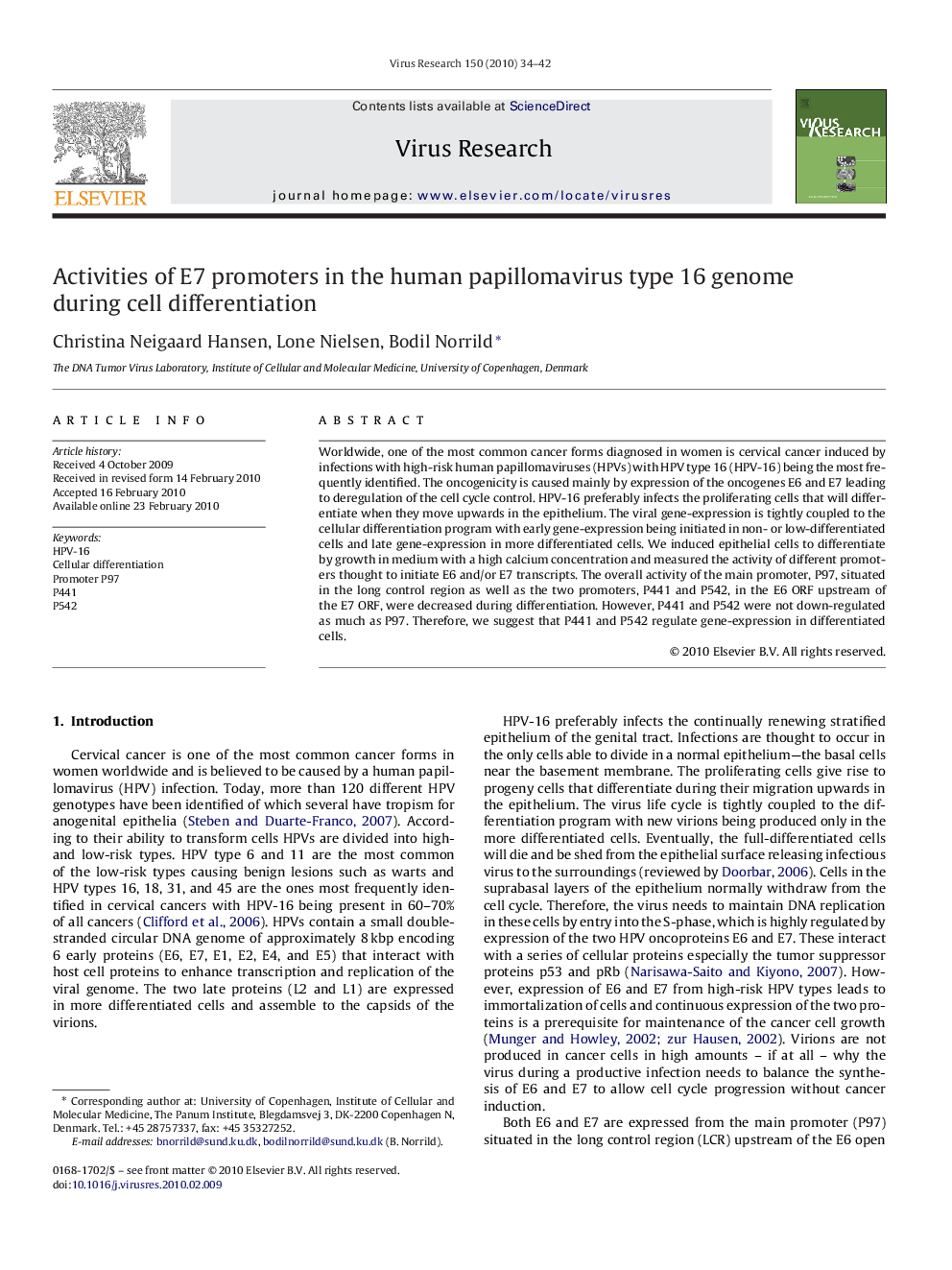| Article ID | Journal | Published Year | Pages | File Type |
|---|---|---|---|---|
| 3429285 | Virus Research | 2010 | 9 Pages |
Worldwide, one of the most common cancer forms diagnosed in women is cervical cancer induced by infections with high-risk human papillomaviruses (HPVs) with HPV type 16 (HPV-16) being the most frequently identified. The oncogenicity is caused mainly by expression of the oncogenes E6 and E7 leading to deregulation of the cell cycle control. HPV-16 preferably infects the proliferating cells that will differentiate when they move upwards in the epithelium. The viral gene-expression is tightly coupled to the cellular differentiation program with early gene-expression being initiated in non- or low-differentiated cells and late gene-expression in more differentiated cells. We induced epithelial cells to differentiate by growth in medium with a high calcium concentration and measured the activity of different promoters thought to initiate E6 and/or E7 transcripts. The overall activity of the main promoter, P97, situated in the long control region as well as the two promoters, P441 and P542, in the E6 ORF upstream of the E7 ORF, were decreased during differentiation. However, P441 and P542 were not down-regulated as much as P97. Therefore, we suggest that P441 and P542 regulate gene-expression in differentiated cells.
